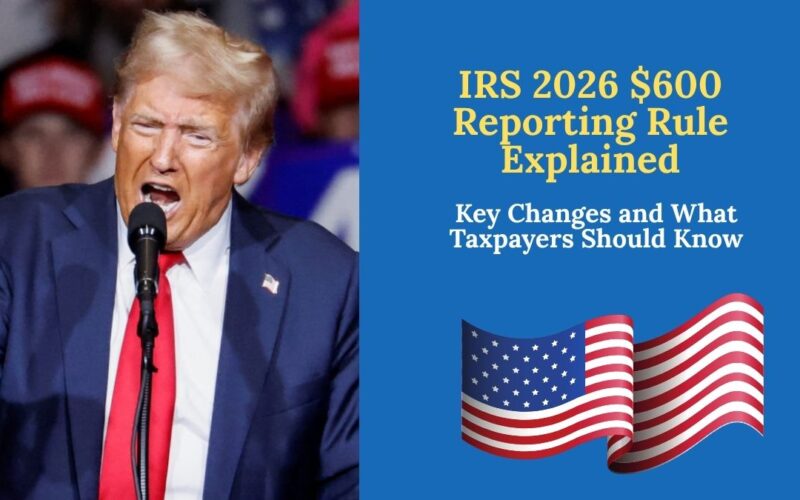Overview
Starting in 2026, the IRS will require third-party payment processors—like Venmo, PayPal, Etsy, and others—to issue Form 1099‑K for users who receive more than $600 in total gross payments in a calendar year, with no minimum number of transactions.
This replaces the old threshold of $20,000 and 200 transactions and is the final stage in a gradual phase-in process beginning in 2024.
Evolution of the Threshold
| Tax Year | Reporting Threshold |
|---|---|
| 2023 | $20,000 & 200 transactions |
| 2024 | $5,000 (no transaction minimum) |
| 2025 | $2,500 (no transaction minimum) |
| 2026 onward | $600 (no transaction minimum) |
This phased approach was introduced to give taxpayers and platforms time to adapt.
Who Will Be Impacted?
- Gig workers (drivers, delivery, freelancing)
- Online sellers (Etsy, eBay shop owners)
- Users of P2P payment apps—even for personal/business mixes
- All industries using card or third-party network payments
Note: Congress has introduced legislation to reverse this drop back to the old threshold, but as of mid‑June 2025, it remains pending.
Why This Change Matters
- Encourages better tax compliance in the growing gig economy
- Enables the IRS to track more small-scale business income
- May surprise individuals who haven’t previously received a 1099‑K
- False positives possible if personal transfers get reported
Breakdown of the Final Phase-In Timeline
- 2024: Threshold lowered to $5,000, no minimum transactions
- 2025: Further reduced to $2,500
- 2026 onward: Drops to $600, no minimum transaction count
- Penalties apply from 2026 if platforms and taxpayers don’t comply
What You Should Do Now
- Track all payments via apps for goods or services
- Separate personal and business transactions—by using notes or separate accounts
- Keep clean records: item cost basis, sales proceeds, business expenses
- If you get a 1099‑K that includes personal transactions, use Schedule 1 to report and eliminate non-taxable income
- Consider quarterly estimated tax payments if this adds taxable income to your return
Risks and Challenges
- Recordkeeping burden increases due to numerous small transactions
- Potential for incorrect reporting on personal transactions
- State requirements may enforce the $600 rule even earlier
- Pending legislation could repeal the rule, adding uncertainty
Table: Obligations After 2025
| Category | Before 2026 | From 2026 |
|---|---|---|
| Reporting Threshold | $2,500 (tax year 2025) | $600 gross payments, no transaction minimum |
| Transactions Included | All income (cards, platforms) | All similarly, including mixed-use accounts |
| Form Issued By | Payment platforms | Payment platforms (1099‑K to IRS and user) |
| Taxpayer Recordkeeping | Strongly advised | Critical for personal vs business breakdowns |
| Personal Income Reporting | Manual adjustment on Schedule 1 | Mandatory correction via Schedule 1 |
FAQs
1. If I receive $600 for selling old furniture, will I get a 1099‑K?
Yes—any business-type payment over $600 will trigger reporting. But if sold at a loss, you’ll report zero on Schedule 1 to avoid tax.
2. Are personal payments for rent or groceries taxable?
These aren’t taxable, but they may still be reported by the platform. You’ll need to exclude them using Schedule 1.
3. How can I avoid the 1099‑K?
The threshold applies regardless of intent. Instead, aim to keep personal transactions minimal or document separately.
4. What if I don’t receive a 1099‑K but should have?
You must still report income. Contact your platform if they omitted the form you expect.
5. Could Congress stop this?
Possibly—the House has passed a bill to revert thresholds to $20,000/200 transactions, but Senate and executive sign-off is pending.
Final Takeaway
The approaching $600 1099‑K threshold in 2026 marks a huge shift in IRS reporting for platform-based payments. Whether you’re a gig worker, part-time seller, or small-scale vendor, it’s essential to start tracking and documenting your activities now.
Clear separation of personal versus business transactions and careful recordkeeping will be vital to avoid surprises at tax time. For ongoing updates—including possible legislative reversals—monitor both IRS changes and Congressional bills.

